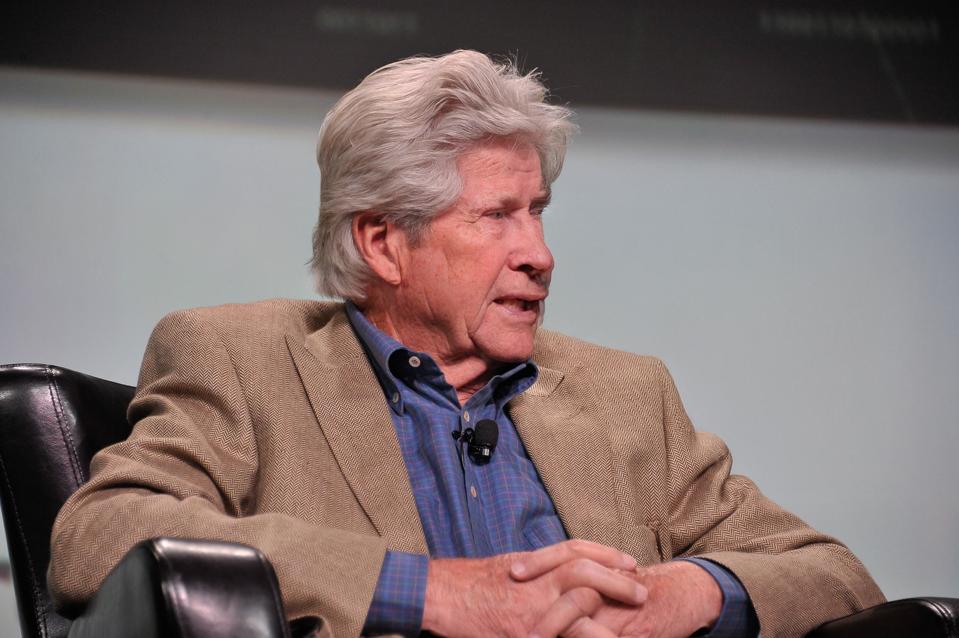Tariffs and tech—these twin forces are rocking the world, from markets to militaries. But how exactly? How can we ride this change to our advantage? Or at least not get crushed. Let’s look at tech today, AI specifically.
A hero of mine—a favorite interview as a young journalist—is the late Don Valentine. The founder of Sequoia Capital, Don is rightly remembered as one of the great Silicon Valley venture capitalists. Being directionally right was Don’s north star. If you make your bets in the right quadrant (of future possibilities), you’ll win. Think one or two 10x-to-100x hits per fund along with a handful of 5x successes to make the fund’s partners happy. Here Don liked to pause for effect. You’ll get no wins if you make bets in the wrong three quadrants, he said.
His advice to fellow VCs: Save your analytics and clever case studies for later. Priority one is investing in the right quadrant.
Two things get you there, Don said. Both were observable and measurable, so you were indeed a lazy VC if you didn’t see them. One, know the speed of the underlying technology. From 1965 to 2015, Moore’s Law made that easy. It showed investors a predictable future based on yearly rates of transistor density improvement in a microprocessor. Don dined on Moore’s Law.
But around 2015 Moore’s Law was pushed aside for a faster rate of evolution. Nvidia’s graphic processors paired with breakthrough deep learning algorithms from Google and others gave wings to cutting-edge artificial intelligence, which had been an investment dead-end since the 1980s. Now AI was reborn as tech’s leader, the new gating factor of change, moving twice as fast (at least) as Moore’s Law.
Think of it this way. If you spoke of Moore’s Law in investment terms, it would be like a 30%-40% compound annual rate of return. Who would refuse that? But today’s AI is equivalent to a 75%-100% CAGR. How long will AI’s astonishing acceleration rate last? Maybe a decade or two. Maybe a half century like Moore’s Law.
The other clue you’ve found the right investment quadrant, said Don, is early customer enthusiasm. In the right quadrant, customers don’t need hard selling. They hear of the product through word-of-mouth, they see it, fiddle with it, buy it. High costs of sales and lengthy closings are eliminated. So are high marketing costs, because happy customers will do the promotion for you. Before Don had started Sequoia, he had run sales at a big semiconductor company. Like all salespeople, Don liked products that sold themselves. Less work, more revenue, fatter bonuses.
Where is AI thriving? An early clue is where data center capacity is booming. Similar clue: Where are the world’s largest data center operators expanding? If data center growth globally is roughly 15% a year, per JLL Research, which countries and regions are seeing the highest demand? Where are the likes of Microsoft, Amazon, Oracle and Google pouring their billions?
Here’s a hint: the CEOs of those companies have all visited ASEAN countries in the last year. Data center capacity in ASEAN is projected to keep pace with double-digit global growth.
Here’s a prediction. Big winners in the AI age will not just be AI companies, but the best and fastest adopters of AI in their businesses—in agriculture, manufacturing, shipping, transportation, consumer packaging—the whole range of modern businesses around the world. The best adopters will be the smartest and most nimble. Slow-moving companies will be in trouble. The richest of the big and slow will try to buy their way to AI operational excellence (through mergers). They will lose to the world’s champion adopters.

